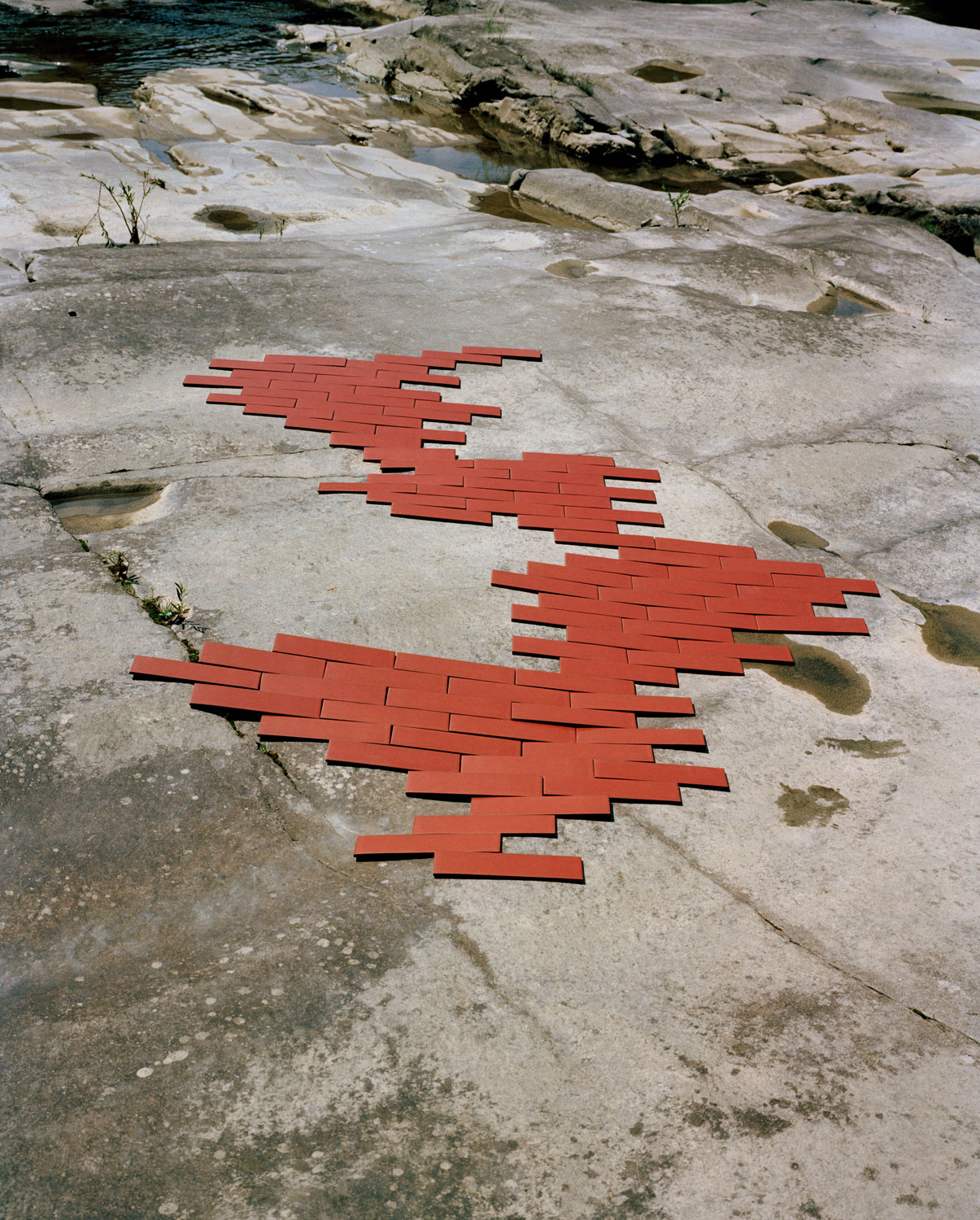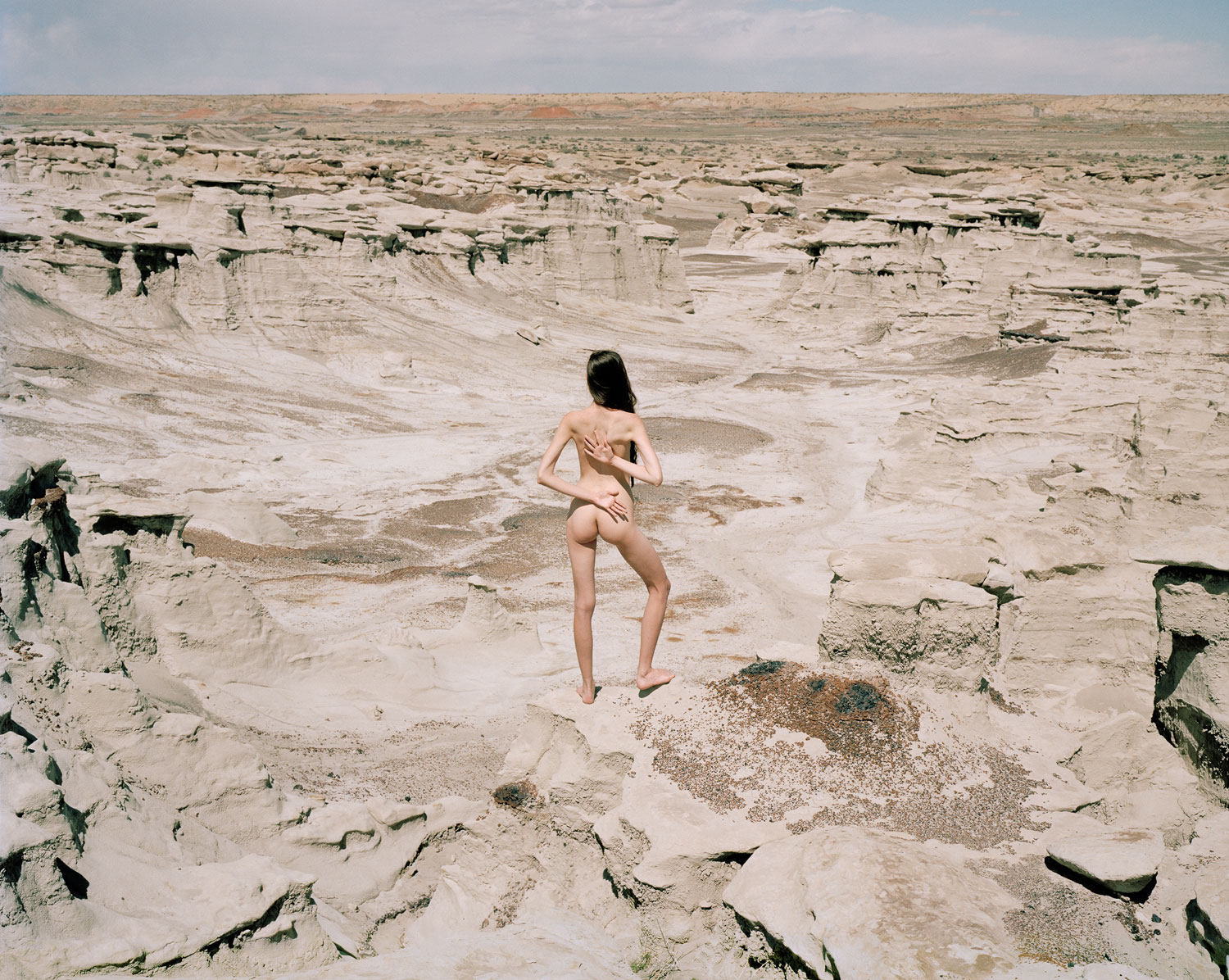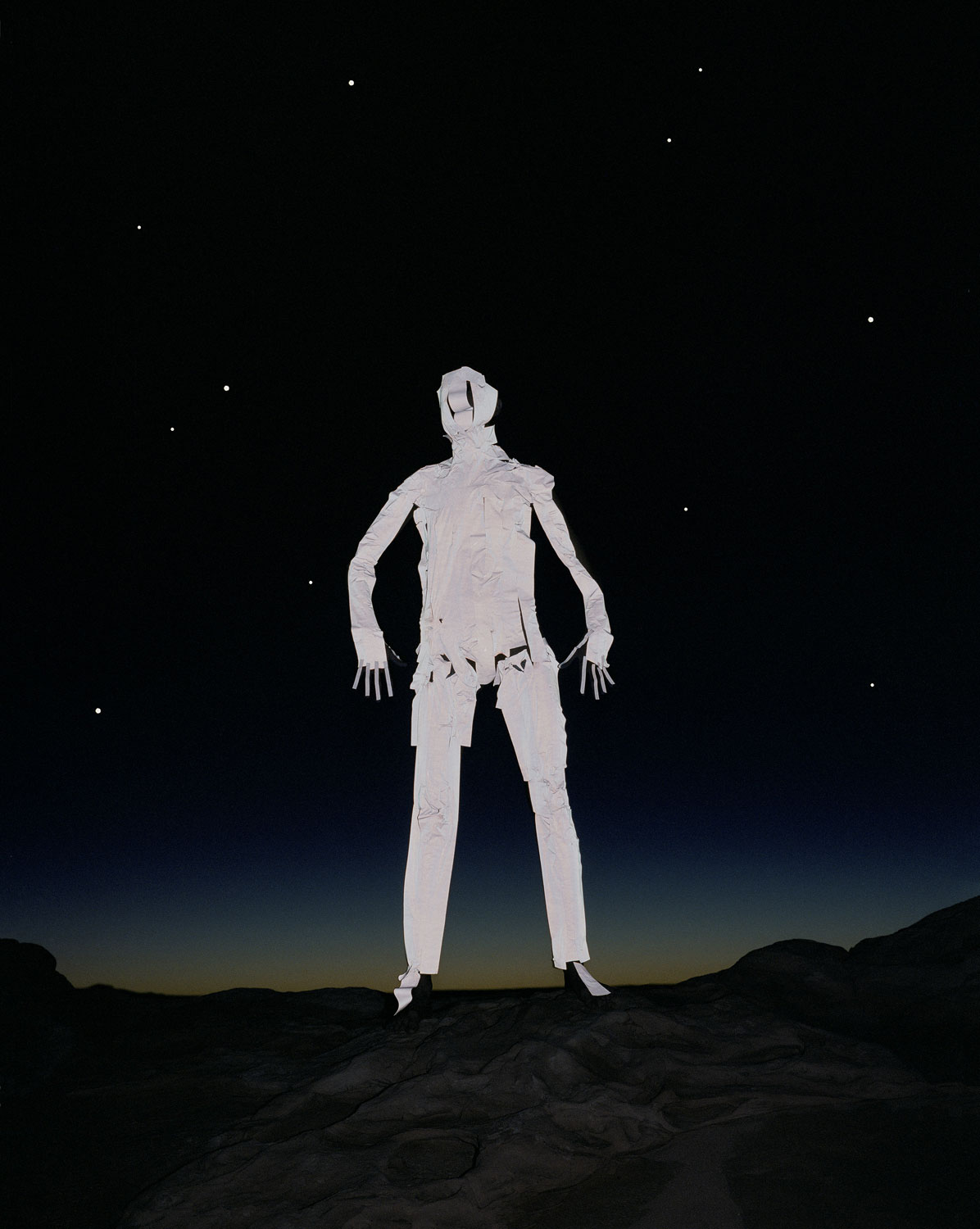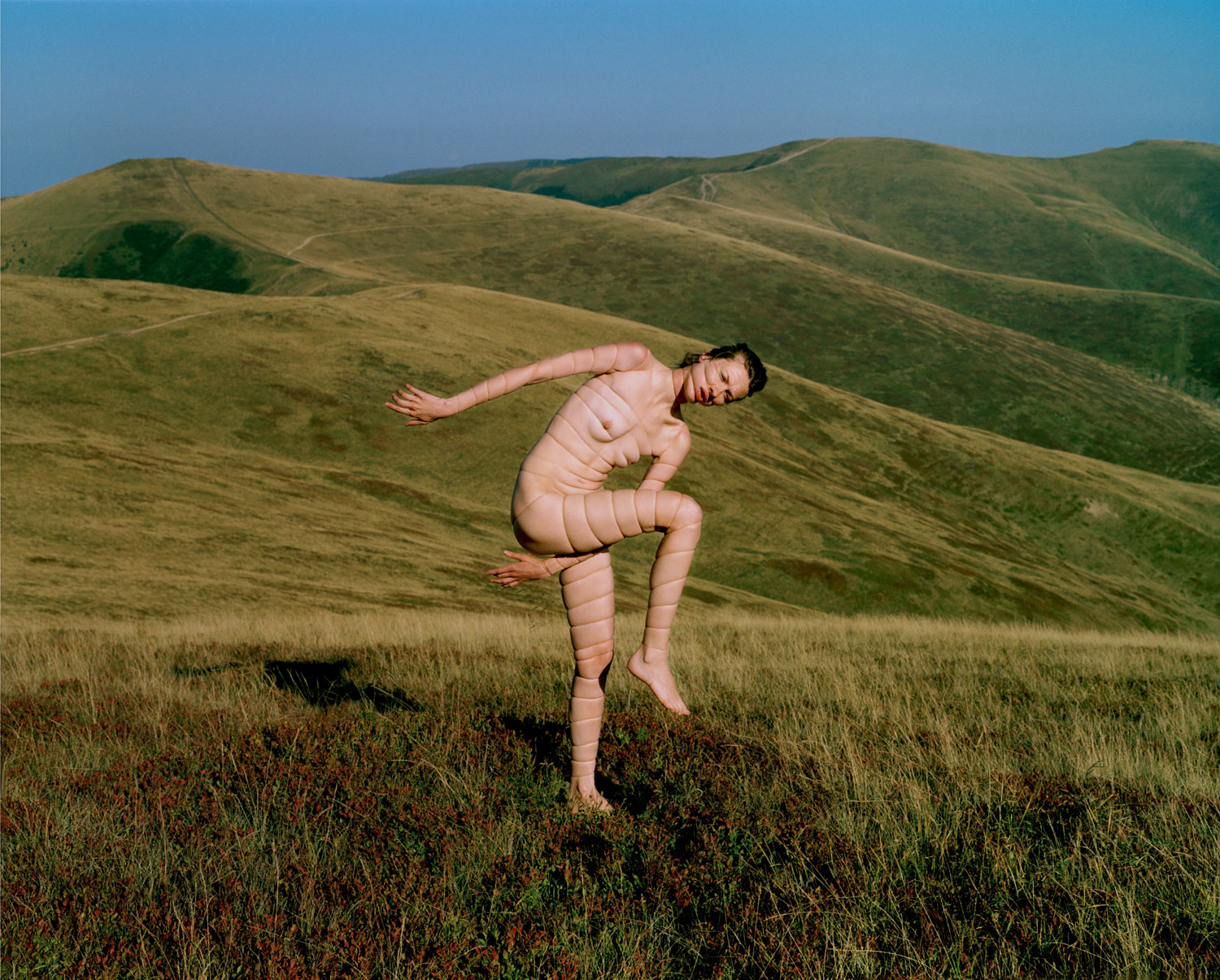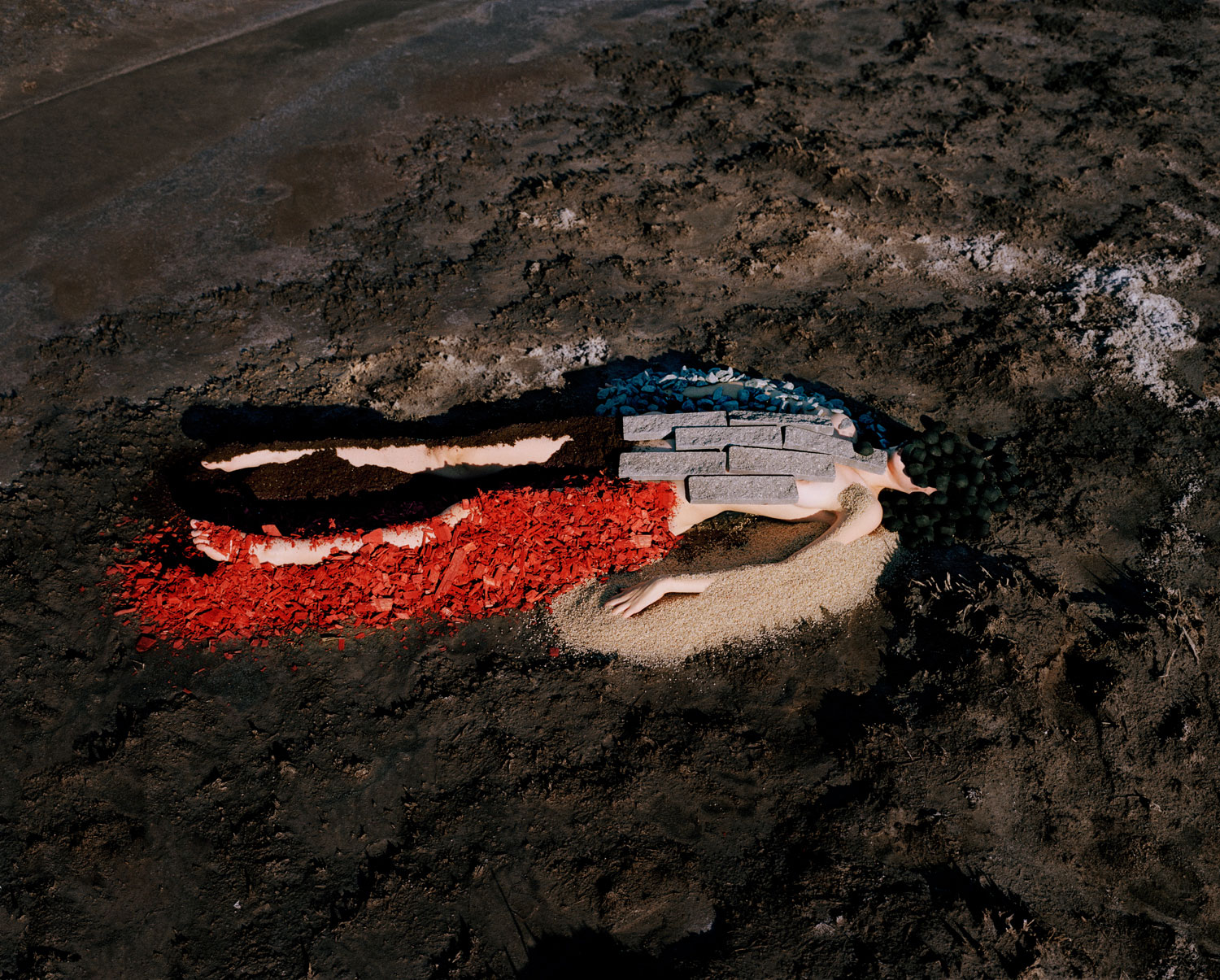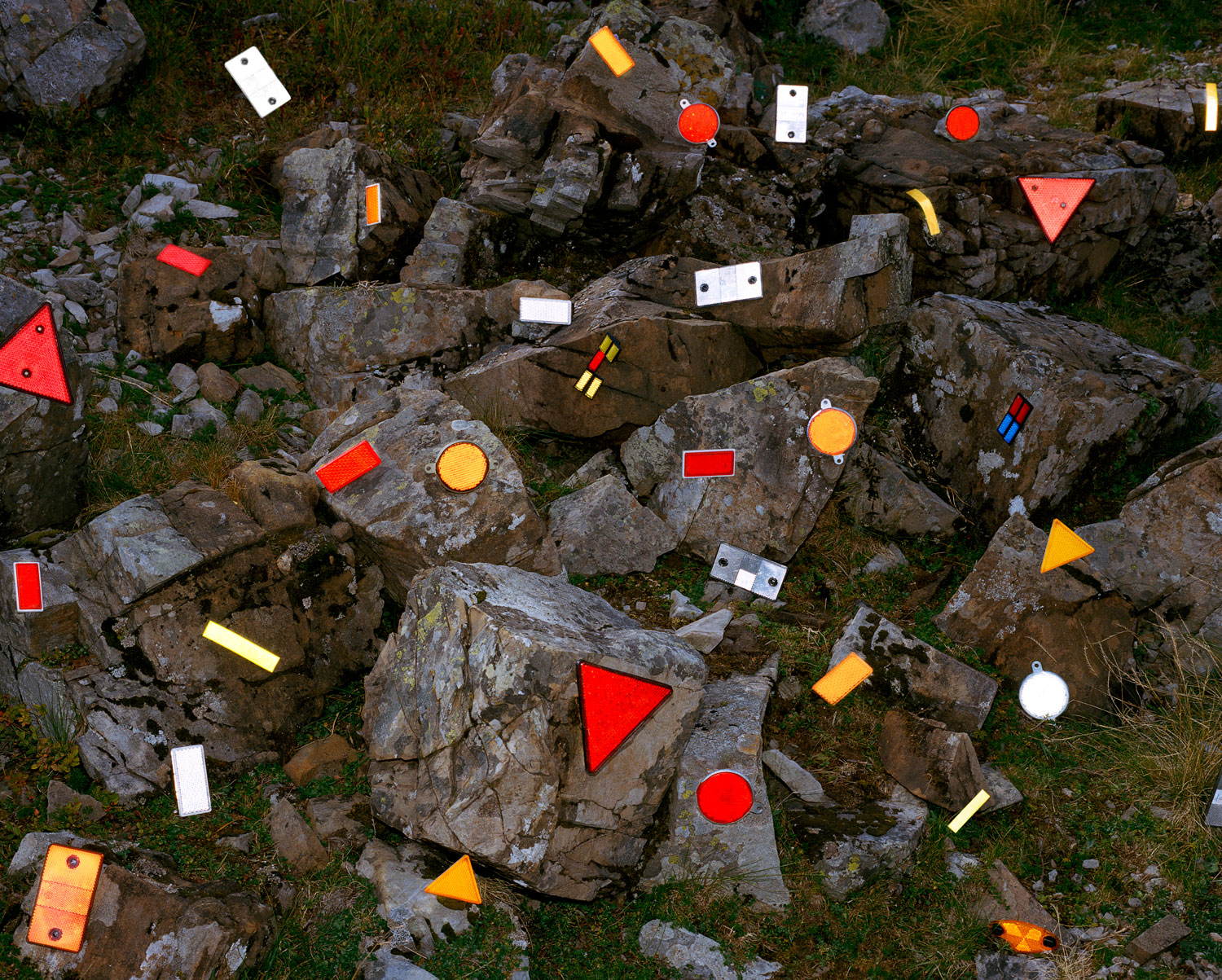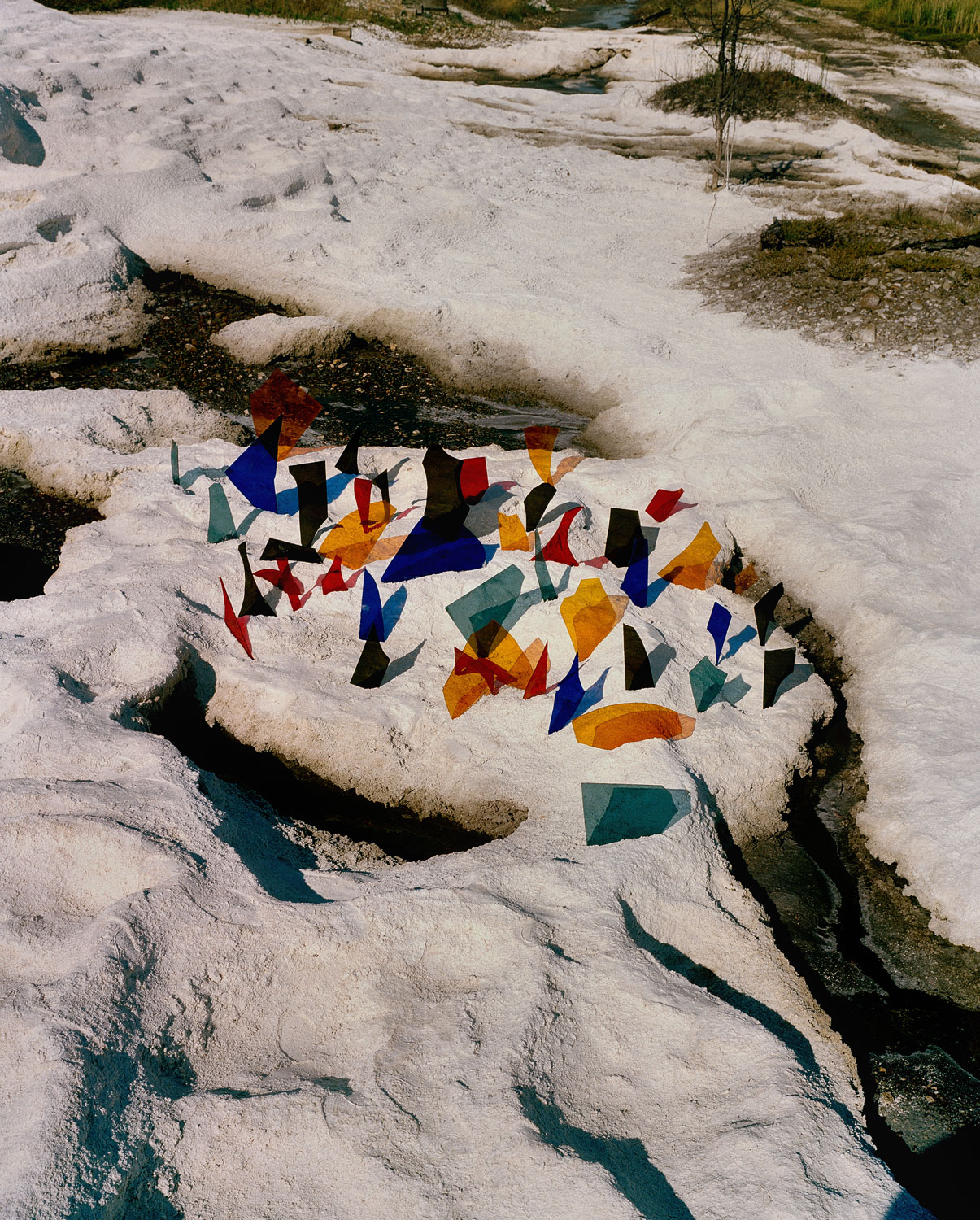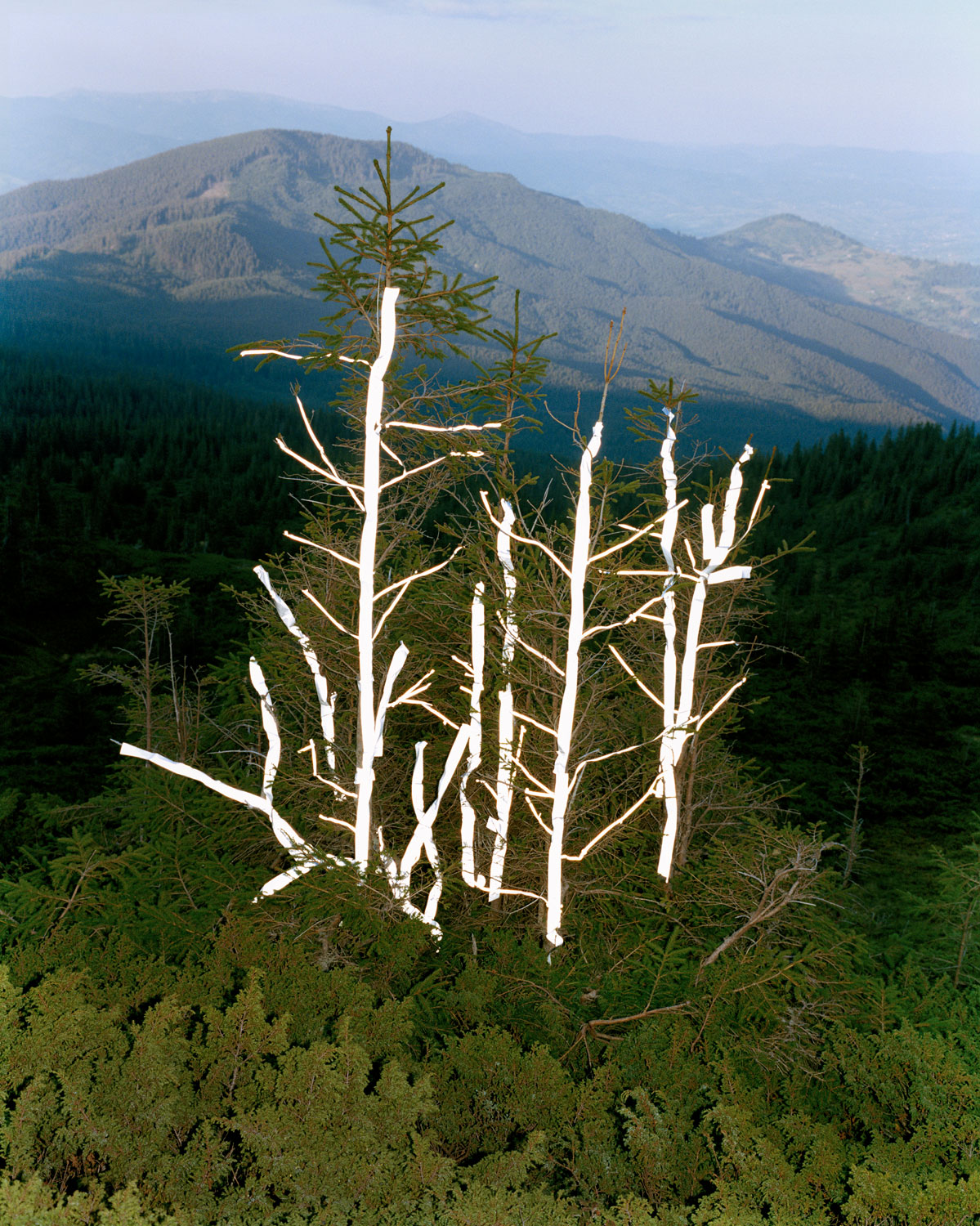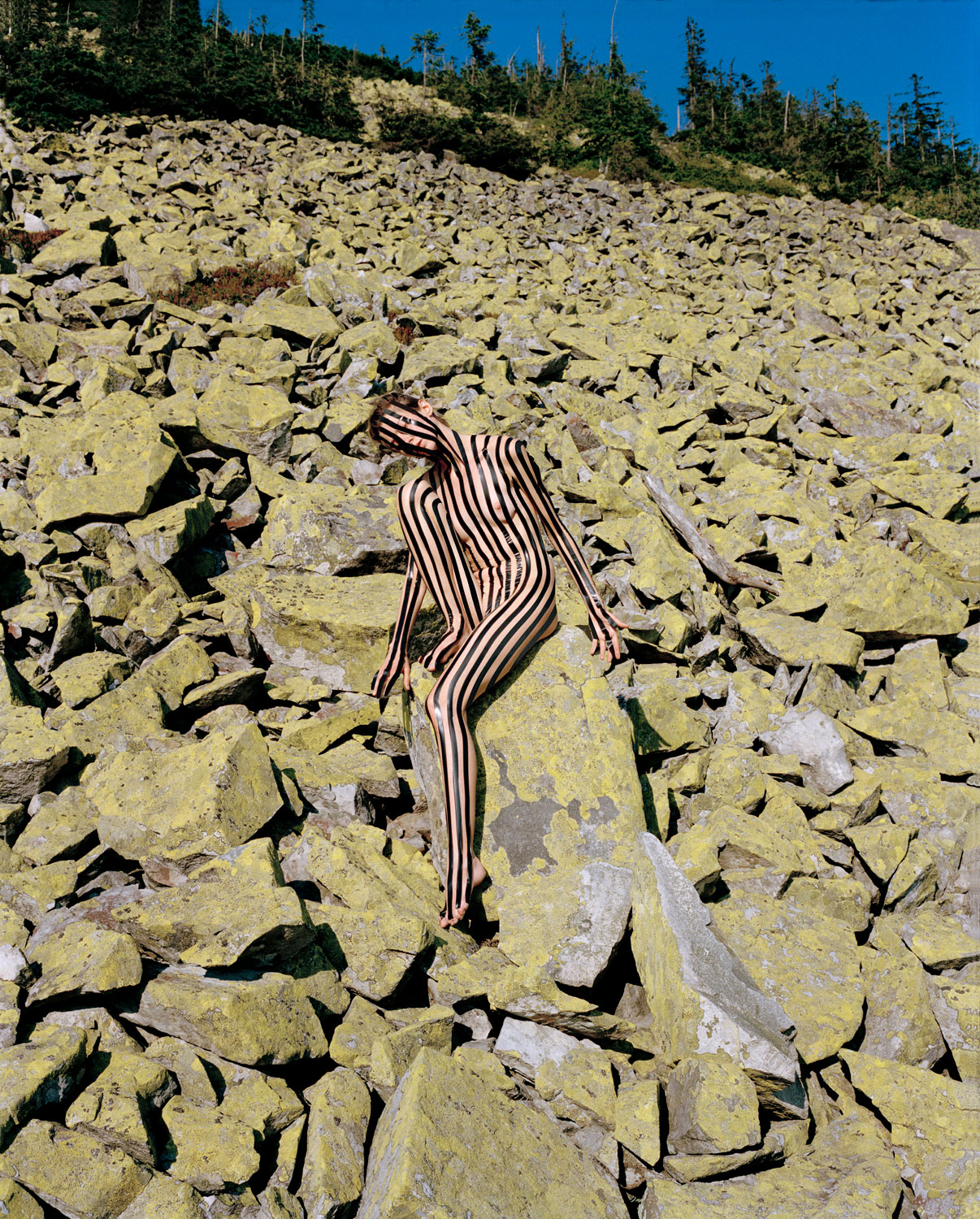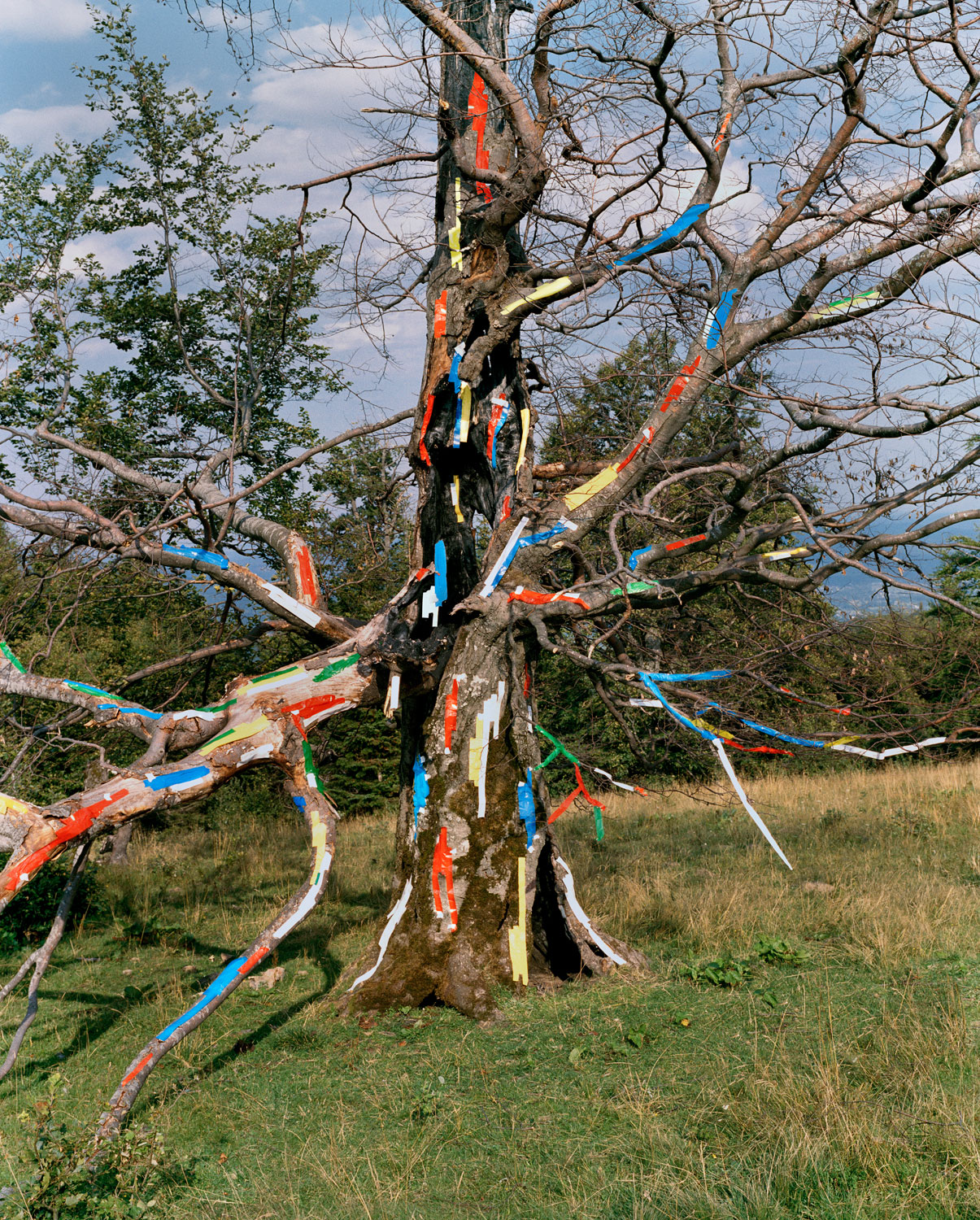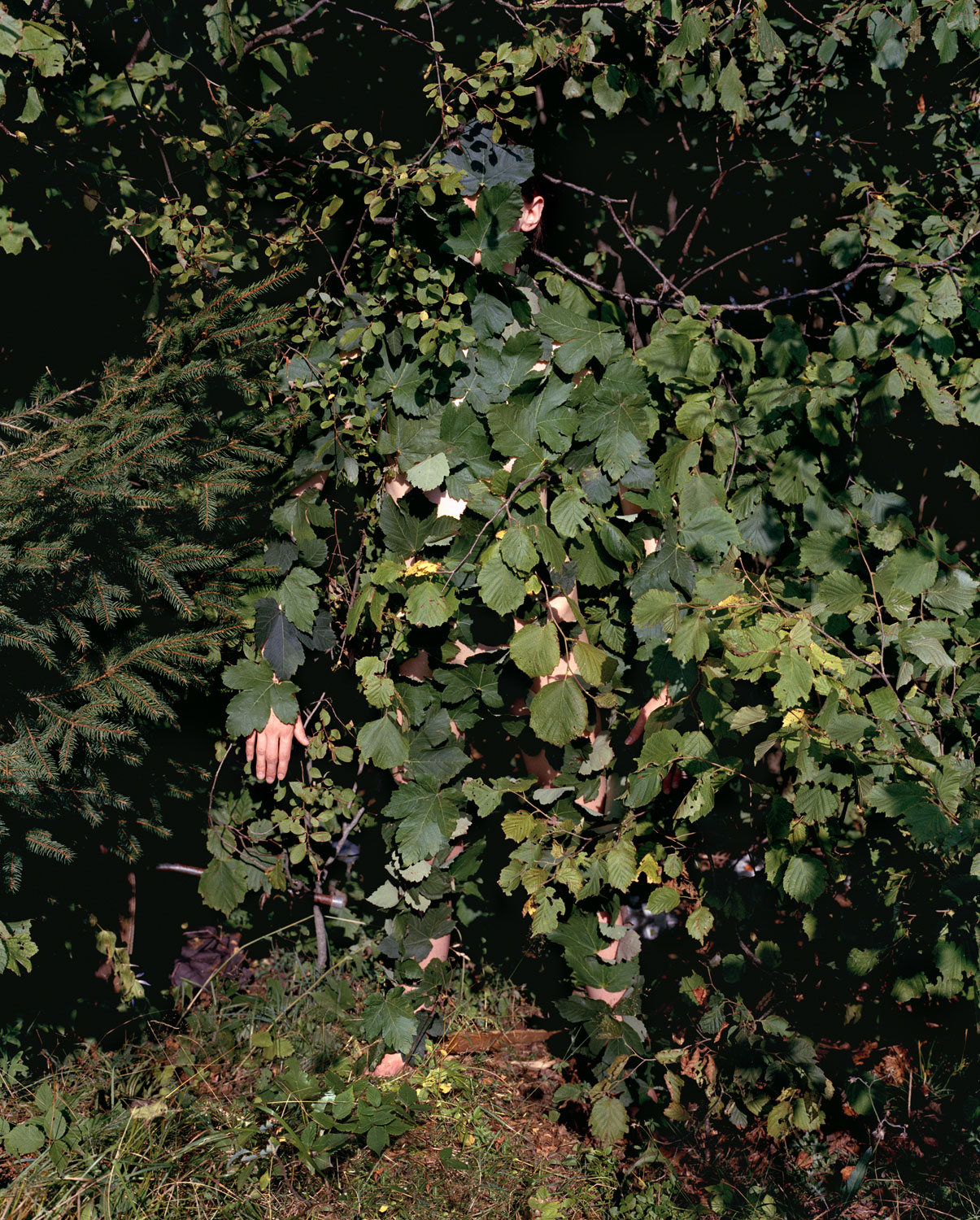ONEIRIC.SPACE
Interview 001, Art
Photography duo Synchrodogs on capturing the realm between wakefulness and sleep
Interview by Charmaine Li

Synchrodogs, made up of Ukrainian creative duo Tania Shcheglova and Roman Noven, has become synonymous for its idiosyncratic surrealist touch. In their photographs, bodies blend into breathtaking terrain, creatures emerge from serene dreamscapes and objects seem to take a life of their own. Since meeting each other on a photography website in 2008, the pair have collaborated on an array of photography projects, ranging from editorials for the likes of ‘Dazed & Confused’ and ‘TUSH Magazine’ to campaigns for fashion brands such as Kenzo and Marni. In our Q&A with Synchrodogs, we delve deeper into how the artistic team transforms visions from their dreams into still images that exude an aura from another realm.
CHARMAINE LI: You’ve said before that your work is about “capturing the dream within the image, recreating it via photography”. Can you talk about what this process looks like?
SYNCHRODOGS: Over the last 10 years, we’ve developed our own nighttime meditation technique in an attempt to catch the space between wakefulness and sleep. Our projects mostly deal with non-rapid eye movement sleep, a stage during which some people might experience hypnagogic hallucinations. While experimenting with these lucid dreaming techniques, we often woke ourselves up in the middle of the night to make a note of what we had just seen, which was a way of gathering our dreams so they could be staged afterward.
Your project ‘Reverie Sleep’ is inspired by the visions that have come to you in the liminal state between waking and sleeping. How do you go about jotting down what you saw in these states?
Usually, we make iPhone notes and when a number of ideas have been collected we write them down into a paper notebook as well, so as not to lose them over time.
Do you think it’s possible to recreate the entirety of a dream through photography?
It’s almost impossible to recreate the dream precisely but even just a hint of it, like an image that’s left in our memory after experiencing it, is an inspiration, a kind of draft, so to speak. By creating installations that are only meant to live for a single day and photographing them before they decay, we often reflect upon how much we—like everything in life—both alter our environment and are altered by it.
Many times, when I try to recall a dream through writing, I become frustrated with my inability to capture the complexity, multidimensional and transpersonal nature of this world through words alone. At the moment, I’ve settled on writing or painting certain fragments of the dream, which have the power to evoke more in my mind—and I’m happy with that, for now. I’m curious to hear what kind of challenges you faced when transforming these fluid, ever-shifting mental images from your dreams into concrete photographs?
We find it quite a challenge as well... How close to the actual dream can we make the picture look like? Typically what happens is that we write down the dream, which tends to be done with really badly chosen words since we’re still sleepy when we do it. When we wake up in the morning to read the notes and our visual memory works with the words to put the puzzle together.
It sounds like both of you make a conscious decision to remember your dreams and engage with them through your artistic practice, has doing so led to any insights about yourselves?
It’s helped us gain a deeper understanding of intuition and how it’s simply trying to help us in everyday life. Waking from a dream with a bitter aftertaste makes us more careful afterward while having a dream with a good atmosphere is kind of like a confirmation that we’re headed towards the right direction.
When did each of you begin paying more attention to your dreams?
When we started being together and working together in 2008. At the time, we weren’t writing them down intentionally to create art projects from them though, we were just intrigued by the subconscious.
Do you record your dreams every morning?
SYNCHRODOGS: No, we only record spectacular dreams, those that leave us fascinated. Like 10 years ago, Tania had a dream in which she was watching on her own hand and on each finger there was an eye on. There was nothing hideous about it, the feeling from this dream was like seeing a miracle. There are many dreams like this that we remember for many years and make notes on them so we never forget that kind of feeling of arousal.
What is it about the realm of dreams that appeals to Synchrodogs?
Dreams are so mysterious. We often see things in our dreams that actually come true in the following days and sometimes it scares us how dreams might know more about our future than we do.
Photography duo Synchrodogs on capturing the realm between wakefulness and sleep
Interview by Charmaine Li
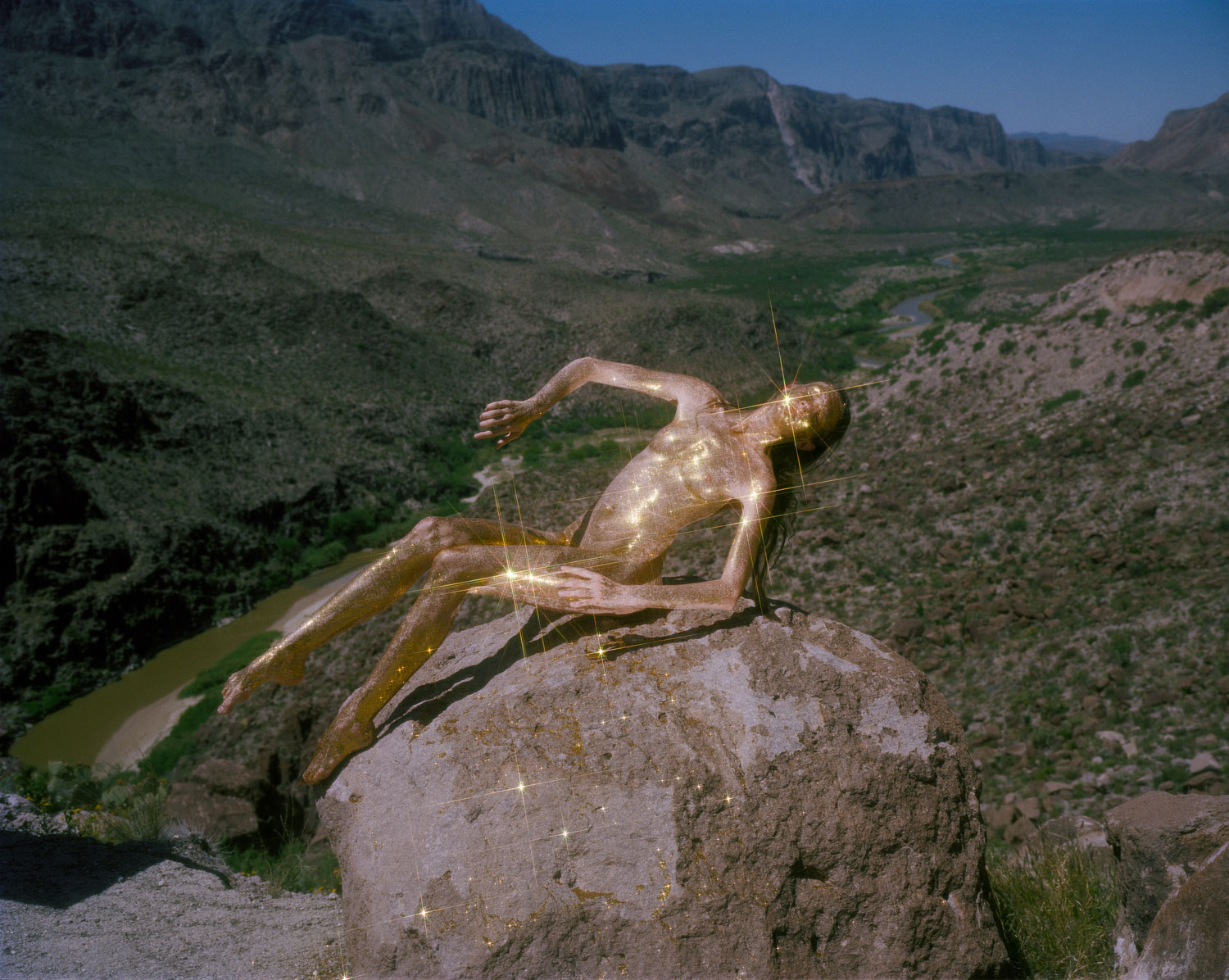
THE INTERVIEW HAS BEEN EDITED AND CONDENSED. PHOTOGRAPHS BY SYNCHRODOGS.
